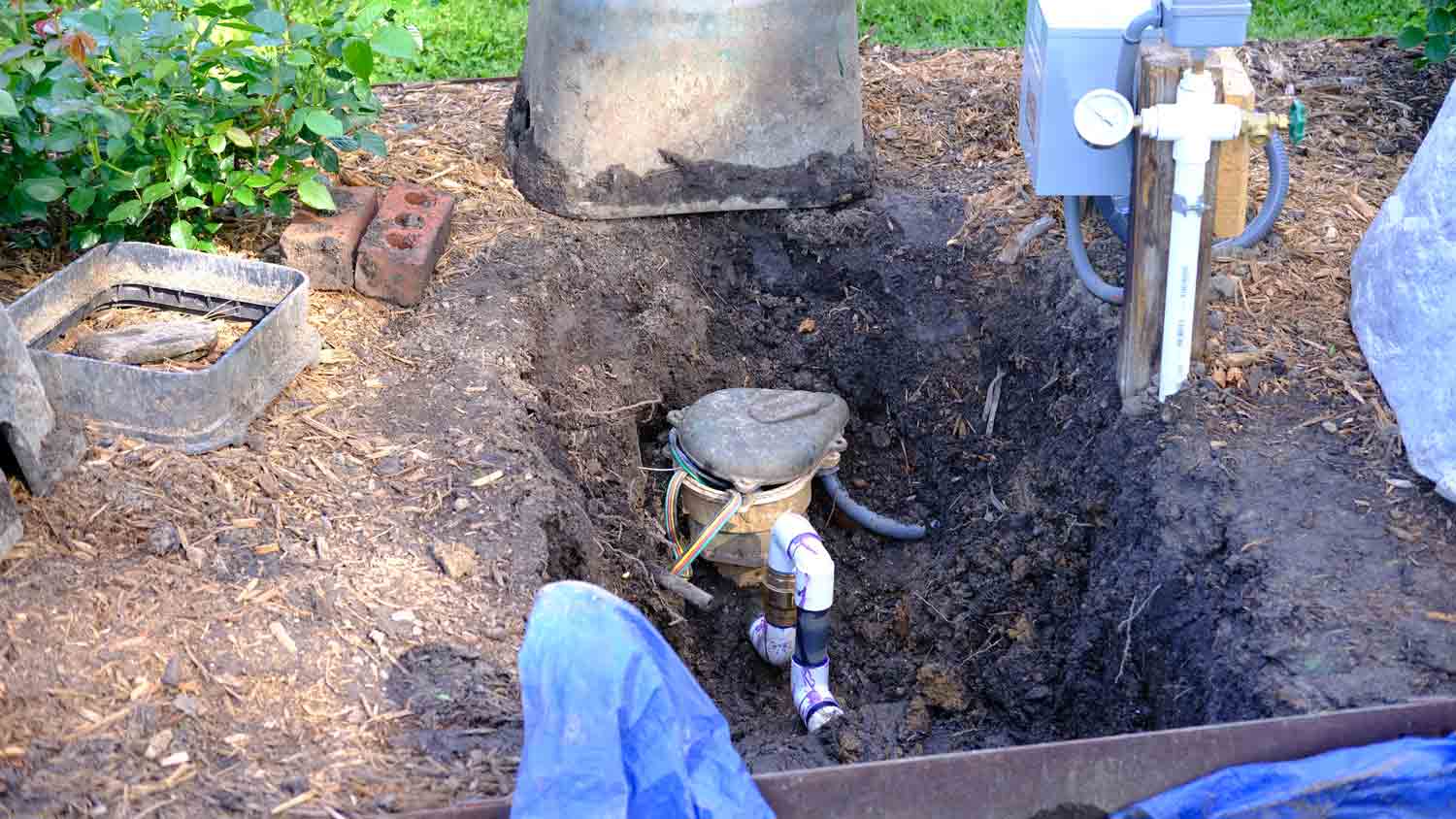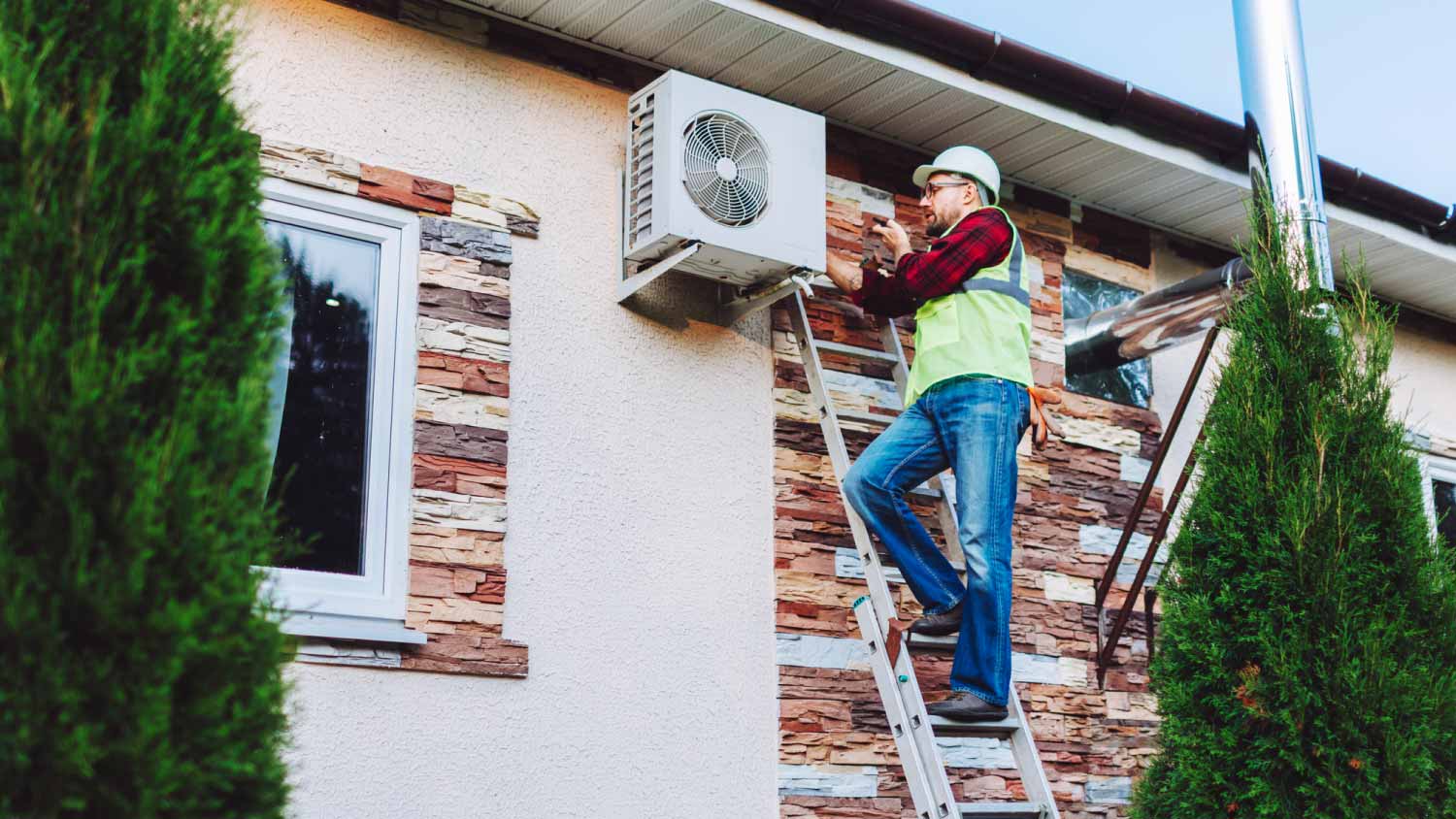
If you have a well, you might need to replace the well pump to have great-tasting water. Well pump replacement costs depend on your well size and other factors.
Pick up a new skill while installing your new pump


Curious about installing a submersible well pump but wondering if it's a DIY project or one best left to the professionals? This comprehensive guide will help you determine if you’re up for the job. Read through the nine steps needed for a successful installation so you can add a reliable water supply to your property on your own or with a professional’s help.

Grab your tools and supplies, put on your protective work gear, and get ready to install a submersible well pump over the course of an afternoon.
Before jumping into the installation process, take a look at your well to determine the best pump for your needs. Consider the depth of your well, the water pressure required, and the flow rate desired.
Submersible pumps are ideal for wells deeper than 25 feet, since they offer excellent performance and energy efficiency. If your well is less than 25 feet, you may want to consider a jet pump instead.
Once you choose the best submersible well pump for your well, make sure to review the manufacturer’s instruction manual for guidance specific to the product you purchased. If you don’t follow the manual, you could damage your sump pump or void the warranty. Consider hiring a pro instead.

You’ll need standard tools like wrenches, pliers, and wire cutters for tasks throughout the process. Double-check that you have the correct submersible pump, control box, wiring, and piping that align with the specifications of your particular well system, as well. Make sure your sump pump is the right size for your well depth and water needs.
Before beginning any work, turn off the power in the circuit breaker to the well pump. Next, drain the system by opening a faucet or valve to release any remaining pressure for safety and to prevent water from gushing out during the installation process.
If you are replacing an existing pump, it’s time to remove the old pump from the well. Follow the manufacturer's instructions and use your tools to safely disconnect the pump from the water line and electrical connections. Be careful while handling the old pump because it may be heavy or corroded. If this task sounds daunting, put down the tools and call a well pump pro near you to help.
Read the manufacturer's instructions to identify any specific preparations that you need to do before you install the new pump.
Before lowering the pump into the well, thoroughly inspect it to ensure all components, including the impeller and motor, are securely attached and in working order. This pre-installation assessment helps reduce the risk of issues once the pump is in place.
When lowering the submersible pump into the well, make sure it’s positioned correctly and oriented according to the manufacturer's instructions. The pump should be placed several feet above the bottom of the well to prevent any stirring of sediment and debris.
Use a sturdy rope or cable to suspend the pump during this process so it maintains a safe distance from the well casing to avoid any damage.
Once the pump is in the correct position, connect the wiring and water line. Follow the manufacturer's instructions for wiring the pump to the control box and power supply. This step is really important, so if you’re ever unsure that you’re doing it right, step aside and let a professional take over.
Use waterproof, heat-shrink tubing and crimp connectors to secure the connections. Additionally, connect the water line to the pump using fittings and clamps.
After completing the wiring and water line connections, get ready to test the system. Turn on the power at the circuit breaker and see how the pump is operating. Monitor it for any unusual noises or vibrations. Check for leaks in the water line connections and address them quickly.
To address any leaks:
Turn off the power
Identify the source of the leak
Tighten or replace the affected components as needed to stop the leakage

Once you know that the pump is functioning correctly and there are no leaks, complete the installation by securing the control box and closing any access points.
Afterward, it’s important to regularly monitor the pump's performance and maintain it according to the manufacturer's recommendations. This includes:
Periodic inspections
Cleaning
Testing pump performance
While a DIY installation may save you approximately $50 per hour in labor costs, it comes with inherent risks. Professional technicians bring experience and expertise to the table, ensuring your submersible pump installation is executed correctly and efficiently.
A professionally installed submersible well pump costs around $2,000, compared to as little as $400 for DIY, but this expense can grant you peace of mind, reliability, and assurance that your well pump is in good hands and on its way to becoming a well-functioning water supply system.
From average costs to expert advice, get all the answers you need to get your job done.

If you have a well, you might need to replace the well pump to have great-tasting water. Well pump replacement costs depend on your well size and other factors.

Your well tank replacement cost will vary depending on a few key factors, such as the size and capacity of the well pressure tank.

Find out the average heat pump repair cost, what impacts pricing, and how to save. Get transparent estimates and tips for homeowners planning repairs.

Is your water pressure too low? Learn what pressure your well tank should be to get your system running smoothly and your showers and faucets back on track.

Well pump pressure helps water get where it needs to go. Learn how much pressure a well pump should have before you start adjusting.

What’s the difference between utility pumps versus sump pumps? While they’re both useful for moving water, utility pumps are more versatile. Here’s how.